If you’re a new surfer, you might not know how to tell if the waves are decent without physically going to check the surf. Whether you’ve learned with us at our Oahu surf school in Hawaii or are surfing elsewhere, checking the surf isn’t always a possibility. Sometimes we have to check the forecast using one of the popular surf forecasting services out there, like Magic Seaweed or Surfline. For those that don’t live in Hawaii and have access to world-class surf on the North Shore in the winter and powerful surf on the South Shore during the summer, understanding how to read a surf forecast will help you know when to head to the beach and ensure you don’t miss a rare swell. Surf forecasting doesn’t just let us know how the surf at our favorite breaks is in the moment but lets us know how it will be days and weeks into the future. Elite-level surfers use surf forecasting to plan strike mission trips and fly to remote destinations for narrow swell windows. The average surfer, however, uses surf forecasting to decide whether they should head to the beach before work or stay in bed.
Components of surf forecasting
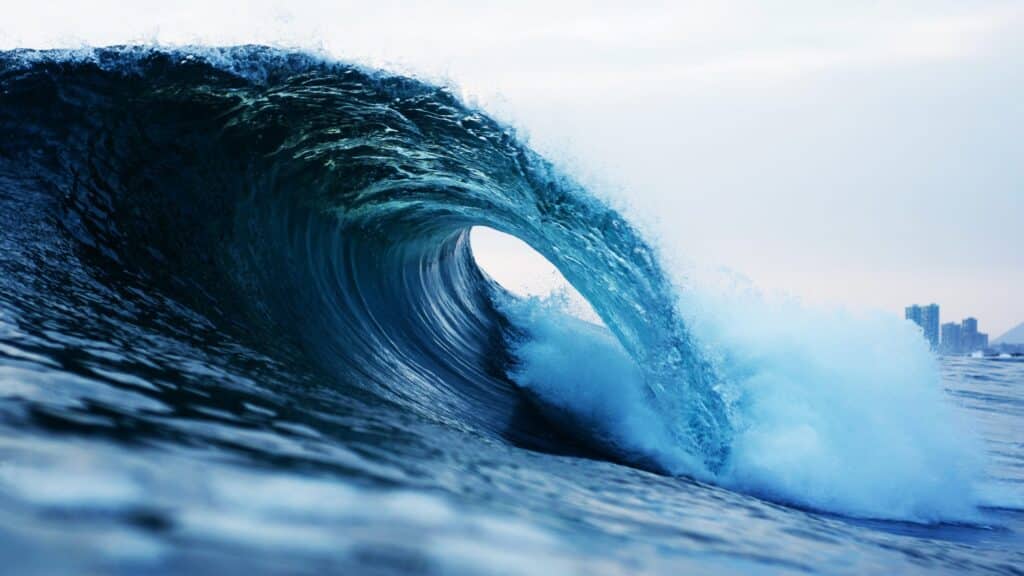
Regardless of what service you use to get your surf forecast, you are going to be looking at the same data points: surf height, wind, tide, and swell. All of these data points combine to give you an accurate (hopefully) prediction of surf conditions.
Surf height
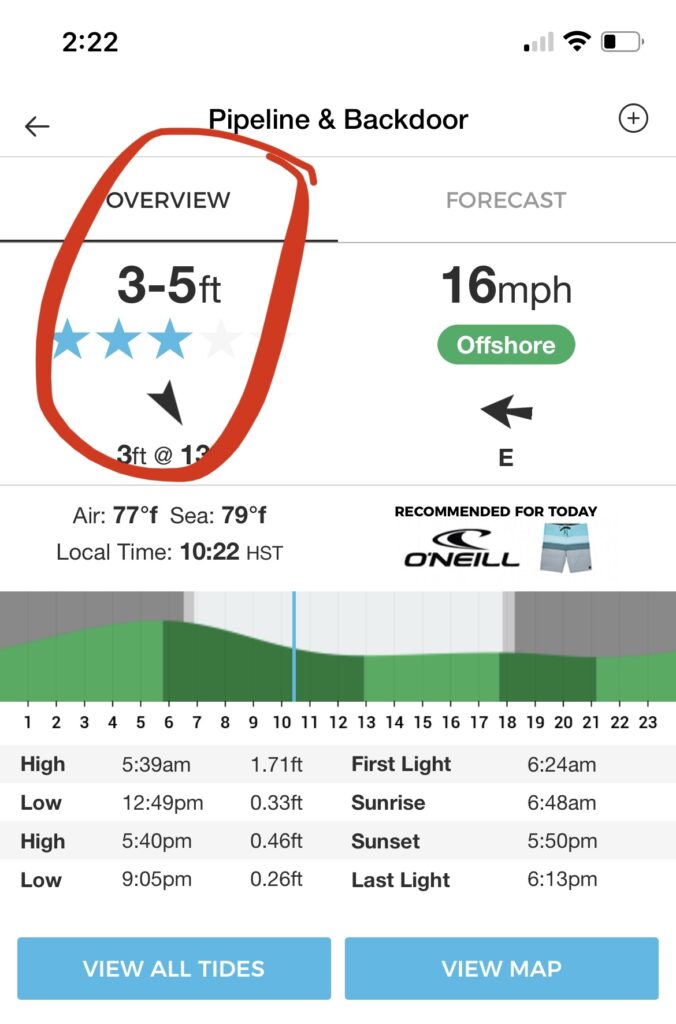
Surf height is exactly what it sounds like. Surf height is the size of the wave’s rideable face. Granted, surf height can be viewed as relative, as it is often downplayed in Hawaii and exaggerated elsewhere. For the sake of forecasting, however, surf height most nearly means the height of the wave from flats to the crest. Surf height is a product of the combination of swell, wind, and tide, which we will dive into below.
Wind
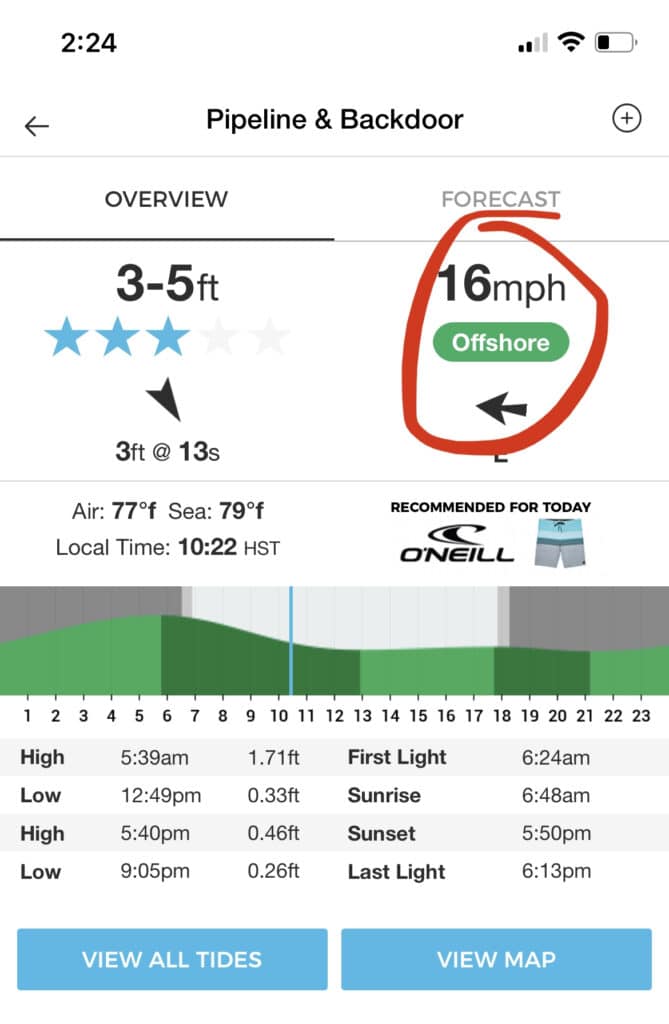
The wind is vital to measuring the quality of waves. If the wind is onshore (blowing towards the beach), the waves will likely be choppy and disorganized. If the wind is blowing offshore (out to sea), the wind grooms the wave’s face to create clean and glassy surf. Offshore wind also helps waves barrel. Wind directions rarely change on the spot without the presence of some type of pressure system, like a cold front. Surfers often track these systems and eagerly await the swell they bring and the favorable wind directions that come with them. In most surf destinations, winds will blow lightly in the morning and increase in intensity as the day continues. So, it’s easy to plan your surf by looking at the hourly forecast and seeing when the good wind window presents itself.
Tide
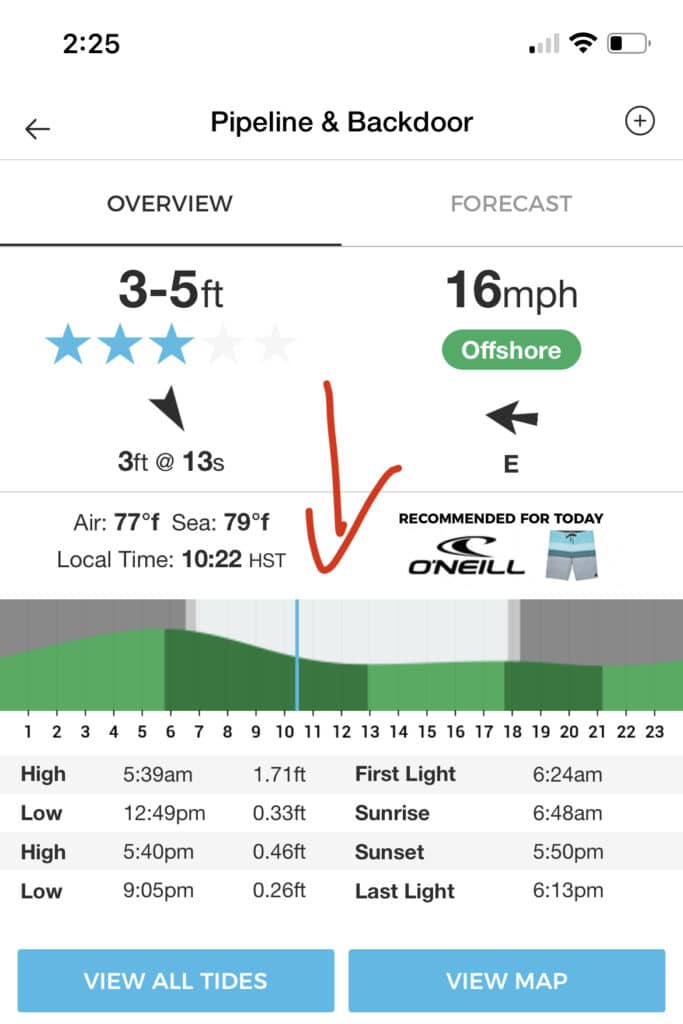
Tide affects all surf breaks differently. Some waves get better with a decreasing tide because the pulling tide creates a steeper surfable face. Other waves can only be surfed at a high tide due to hazardous rocks and reef. Some waves are too full at high tide and close out at low tide, so mid-tide is the optimal time to surf. The one thing all surf breaks have in common is that the tide affects the quality of the surf. Surf forecasting apps allow you to see tidal charts alongside swell and wind conditions to better plan your surf.
Swell Height
Swell height and surf height are directly related, but they are not the same thing. Swell height is tracked by buoys in the open ocean that measure the height of passing swells. Depending on the swell interval, a swell will likely produce a surf height that is larger than the forecasted swell height.
Swell interval
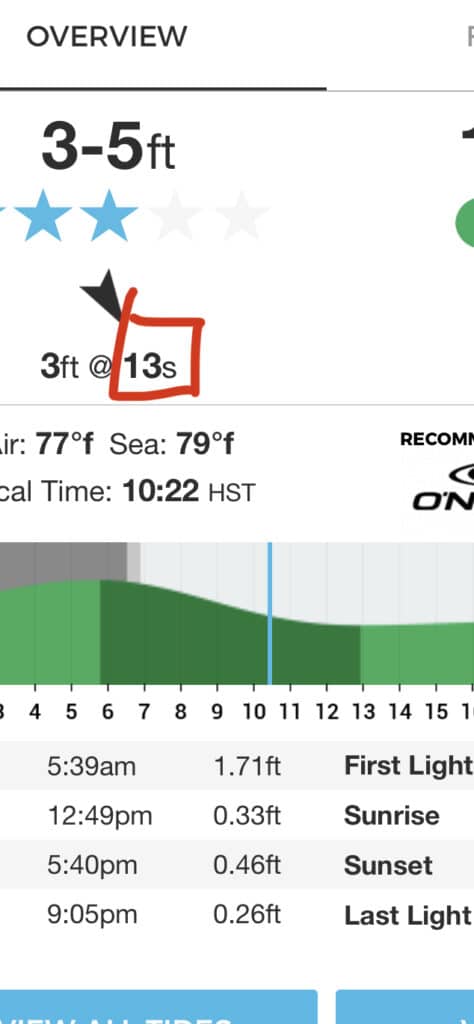
Swell interval is the measured distance between the waves in a swell. Swell interval is measured in seconds, and a longer swell interval produces larger surf. Large swell intervals, upwards of 10 seconds, are associated with groundswell and produce larger surf than short swell intervals that are associated with wind swell. When a swell has a longer swell interval, it means that the swell has traveled for a longer distance and has had ample time to build in size.
Swell Direction
Swell direction is exactly what it sounds like the direction the swell is coming from. Understanding swell direction can help you decide where to surf. Some breaks do well with direct swell direction, while other breaks (like point breaks) require swell to wrap around a point to produce clean surf.
Now that you’re armed with a better understanding of surf forecasting, you can take what you learned in the water during your surf lesson and continue progressing at home. For more surf tips or to book your Oahu surf lesson, click here.


